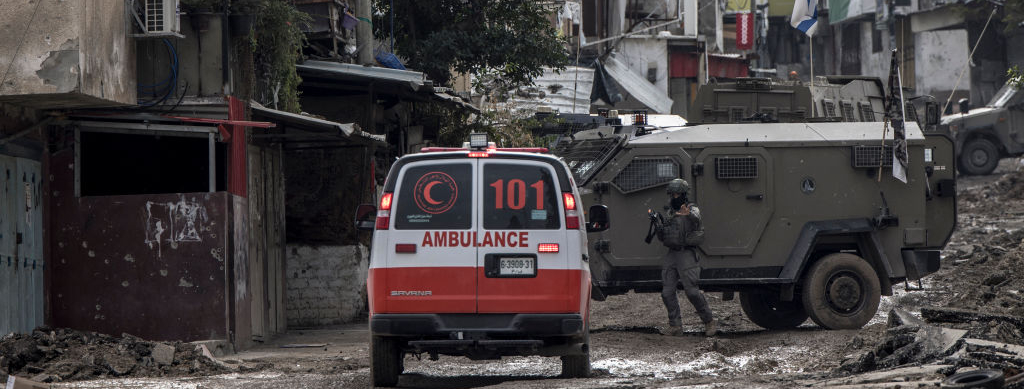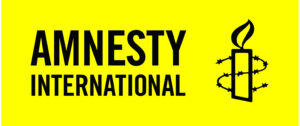Amnesty International’s research also found that Israeli forces obstructed medical assistance to people with life-threatening wounds and attacked those attempting to assist injured Palestinians, including paramedics.
Over the past few months Israel has stepped up deadly raids across the West Bank and tensions have skyrocketed. In one recent incident Israeli forces carried out a raid masquerading as medical staff. At least 507 Palestinians were killed in the West Bank in 2023, including at least 81 children, making it the deadliest year for Palestinians since the United Nations Office for the Coordination of Humanitarian Affairs (OCHA) began recording casualties in 2005.
“Under the cover of the relentless bombardment and atrocity crimes in Gaza, Israeli forces have unleashed unlawful lethal force against Palestinians in the occupied West Bank, carrying out unlawful killings and displaying a chilling disregard for Palestinian lives. These unlawful killings are in blatant violation of international human rights law and are committed with impunity in the context of maintaining Israel’s institutionalized regime of systematic oppression and domination over Palestinians,” said Erika Guevara-Rosas, Amnesty International’s Director of Global Research, Advocacy and Policy.
“These cases provide shocking evidence of the deadly consequences of Israel’s unlawful use of force against Palestinians in the West Bank. Israeli authorities, including the Israeli judicial system, have proven shamefully unwilling to ensure justice for Palestinian victims. In this climate of near total impunity, an international justice system worth its salt must step in. The Prosecutor of the International Criminal Court must investigate these killings and injuries as possible war crimes of wilful killing and wilfully causing great suffering or serious injury. The situation in Palestine and Israel is a litmus test for the legitimacy and reputation of the court. It cannot afford to fail it.”
Since 7 October, across the West Bank, Israeli security forces’ use of unlawful force during law enforcement operations has been unrelenting, sowing fear and intimidation among entire communities; it has also been used to disperse rallies and protests held in solidarity with Gaza and demanding the release of Palestinian prisoners and detainees.
Between 7 October and 31 December 2023, 299 Palestinians were killed, marking a 50% increase compared to the first nine months of the year. At least 61 further Palestinians, including 13 children, have been killed so far in 2024 as of 29 January, according to OCHA.
“Under the cover of the relentless bombardment and atrocity crimes in Gaza, Israeli forces have unleashed unlawful lethal force against Palestinians in the occupied West Bank…”
— Erika Guevara-Rosas, Amnesty International
Amnesty International sent requests for information on the four cases investigated to the Israeli military’s spokesperson unit and to the Jerusalem District Commander on 26 November. At the time of publication, no response had been received. Amnesty International is continuing to investigate other cases of excessive force during law enforcement operations, such as the repeated raids and attacks in Jenin and Tulkarem in the northern occupied West Bank.
Israel has a well-documented track record of using excessive and often lethal force to stifle dissent and enforce its system of apartheid against Palestinians leading to a historic pattern of unlawful killings committed with impunity.
“Three bullets were fired without any mercy”: The Nour Shams October raid
Since 7 October, Israeli forces have stepped up raids, carrying them out almost daily across the occupied West Bank in what it describes as search and arrest operations.
Over 54% of the 4,382 Palestinians injured in the West Bank were injured during such operations, according to OCHA.
In one illustrative case investigated by Amnesty International, Israeli military and border police forces used excessive force during a 30-hour-long raid on Nour Shams refugee camp in Tulkarem beginning on 19 October.
During the operation Israeli forces killed 13 Palestinians, including six children, four of them under the age of 16, and arrested 15 people. Israeli military sources quoted in media reports said that one Israeli Border Police officer was killed and nine were injured after an improvised explosive device was thrown at them by Palestinians.
Residents told Amnesty International that, during the operation, Israeli soldiers stormed more than 40 residential homes, destroying personal belongings and drilling holes in the walls for sniper outposts. Water and electricity to the camp was cut off and soldiers used bulldozers to destroy public roads, electricity networks and water infrastructure.
Among those killed during the raid was 15-year-old Taha Mahamid, who Israeli forces shot dead in front of his house as he came out to check whether Israeli forces had left the area. Taha was unarmed and posed no threat to the soldiers at the time he was shot, based on witness testimony and videos reviewed by Amnesty International. A video filmed by one of his sisters and verified by Amnesty’s Crisis Evidence Lab shows Taha walking on the street, peeking to check for the presence of soldiers and then collapsing on the street outside his house, after the sound of three gunshots.
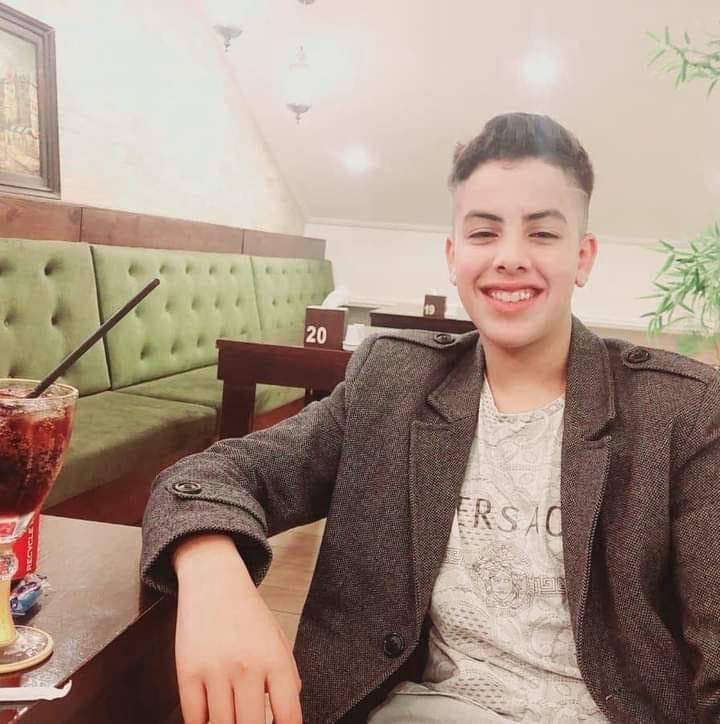
Fatima, Taha’s sister, told Amnesty International: “They did not give him a chance. In an instant, my brother was eliminated. Three bullets were fired without any mercy. The first bullet hit him in the leg. The second – in his stomach. Third, in his eye. There were no confrontations… there was no conflict.”
An eyewitness told Amnesty International that when Taha’s father, Ibrahim Mahamid, then attempted to carry his injured son to safety, Israeli forces shot him in the back. A verified video filmed by one of Taha’s sisters immediately after the shooting shows Taha’s father lying on the ground next to Taha before limping away. Fatima Mahamid added: “He [her father Ibrahim] raised his hands, showing them [the soldiers] that he had nothing in them. He just wanted to take his son. They shot him with one bullet, and my father fell next to Taha.”
Ibrahim Mahamid suffered serious damage to his internal organs and had to be taken to intensive care.
Neither Taha nor Ibrahim Mahamid posed a threat to security forces or anyone else when they were shot. This unnecessary use of lethal force should be investigated as possible war crimes of wilful killing and willfully causing great suffering or serious injury to body or health.
“They did not give him a chance. In an instant, my brother was eliminated.”
— Fatima, sister of 15-year-old Taha who was shot dead by Israeli forces
Approximately 12 hours after Taha Mahamid’s killing, Israeli military stormed his family’s home and locked his family members, including three young children, in a room under the supervision of a soldier for about 10 hours. They also drilled holes in the walls of two rooms to position snipers overlooking the neighbourhood. One witness said the soldiers searched the house, beating a member of the family, and one was seen urinating on the doorstep.
In videos verified by Amnesty International, Israeli military bulldozers are seen damaging the narrow streets of the Nour Shams refugee camp. Also, a video posted by the Palestinian Red Crescent Society (PRCS) and verified by Amnesty’s Crisis Evidence Lab shows the extensive damage to a road inside the Nour Shams refugee camp, hampering the medical evacuation of the injured during the raid.
Excessive force used against Palestinian protesters
Protests in solidarity with Palestinians in Gaza have been held frequently across the occupied West Bank since 7 October. These demonstrations have been mostly peaceful, but some protesters have been seen throwing stones in response to the presence or forceful intervention of the Israeli forces.
Israeli forces’ use of lethal force in response to youth throwing stones is at odds with the right to life under international human rights law and international standards regulating the use of force in policing. Lethal force in law enforcement can only be used when there is an imminent threat to life; its use is not a proportionate response to stone-throwing.
In one egregious case on 13 October in Tulkarem, two eyewitnesses described to Amnesty International how Israeli forces stationed at a military watch tower at one of the main entrances to the town and those on the roof of a nearby home opened fire on a crowd of at least 80 unarmed Palestinians peacefully demonstrating in solidarity with Gaza.
Two journalists who were at the scene separately told Amnesty International that they saw Israeli forces firing two tear gas canisters at the crowd and shortly afterwards opening live fire at them without warning shots. The two journalists saw four people being shot and injured as they tried to run away from the shooting. A few minutes later, Israeli forces also opened fire in the direction of the journalists even though both were wearing vests clearly marked as Press. They hid behind a wall along with three children and had to remain there for about two hours as the operation continued.
During this time, they witnessed a Palestinian man riding past them on a bike being shot and injured by an Israeli soldier. One of the journalists also saw another demonstrator being shot in the head. She described how the victim was suddenly shot and fell to the ground. He later succumbed to his wounds.
In a different incident, on 27 November, Israeli forces resorted to excessive force against a crowd of Palestinians in Beitunia, near Ramallah. The group had gathered to greet prisoners released from Ofer prison as part of the deal between Israel and Hamas during the temporary humanitarian pause in Gaza.
Witnesses described to Amnesty International how the Israeli military fired live ammunition and rubber coated bullets at the crowd and dropped tear gas canisters using drones. Witnesses also reported that Israeli forces deployed a military bulldozer and drove military jeeps into the Palestinians who had gathered.
One eyewitness saw resident Yassine Al-Asmar being shot in the chest while he was just standing in the crowd and watched how ambulances were unable to reach him due to the ongoing shooting by the Israeli forces. Instead, his friends managed to move him out and take him to a hospital in Ramallah, but he was declared dead shortly afterwards.
Videos verified by Amnesty International’s Crisis Evidence Lab show some protesters throwing stones and burning tires in the area, as well as at least one person throwing a Molotov cocktail at a bulldozer.
Under international law, throwing stones or burning tires do not justify a law enforcement response involving the use of firearms. International law prohibits the use of lethal force against people who are not posing an imminent threat of death or serious injury.
These shootings should be investigated as possible war crimes of wilful killing and wilfully causing great suffering or serious injury.
One of the witnesses said: “They seek to mar our celebration of released prisoners and assert their domination.”
“I saw …the ambulance getting shot at”: Obstruction of medical assistance
The obstruction of medical assistance by Israeli forces during operations across the OPT is a routine practice Amnesty International has documented for years and is part of Israel’s system of apartheid. Under international law, Israeli forces have an obligation to ensure anyone injured by their forces is able to access medical treatment.
Amnesty International has investigated five occasions where the Israeli forces hindered or prevented those seriously injured in demonstrations and raids from receiving critical medical assistance. They also shot at Palestinians trying to help, including medics tending to the wounded.
On 10 October, in Ein Al-Lozeh, a neighbourhood of Silwan in occupied East Jerusalem, an Israeli Border Police patrol unit unlawfully killed Ali Abbasi who was unarmed and attempting to pull to safety Abd Al-Rahman Faraj, who had just been shot by the same unit on patrol in the area.
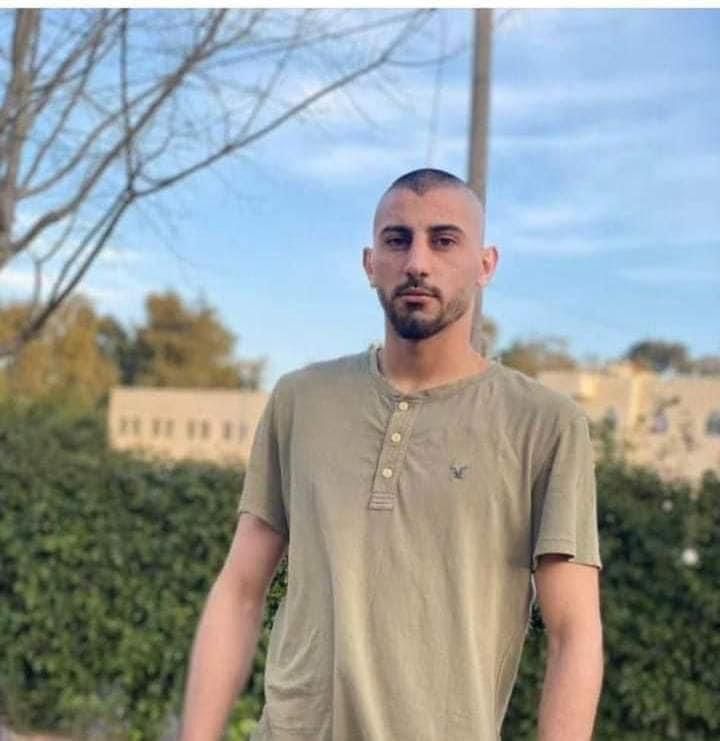
Confrontations had erupted between Palestinians and Israeli Border Police in the neighbourhood. Palestinians used fireworks, and the Israeli forces used live ammunition. Amnesty’s Crisis Evidence Lab verified three videos shot from different angles, showing fireworks hitting the back and sides of a police car.
During these clashes, Abd Al-Rahman Faraj was shot. Shortly thereafter, Ali Abbasi tried to pull Faraj to safety. An eyewitness, who spoke on condition of anonymity for security reasons, told Amnesty International that they saw Israeli forces shooting Ali Abbasi in the head as he tried to pull Faraj away.
The witness said Israeli forces then threatened to shoot people who tried to help the two men and obstructed an ambulance from reaching the victims, leaving them bleeding on the ground for over an hour. The victims were later collected by an Israeli military ambulance and their bodies have yet to be returned to their families.
Similarly, during the crackdown on the Tulkarem demonstration on 13 October, eyewitnesses to the shooting by Israeli forces of the Palestinian man who was riding a bike told Amnesty International that the paramedic who attempted to rescue the victim was also shot at by the Israeli soldiers as he approached the injured man. One of the two journalists who witnessed the incident told Amnesty International that she saw the man on the bike being shot in one of his legs before he fell down:
“He was screaming. And then one of the ambulance guys tried to move him and save his life but the Israeli sniper continued shooting. I saw with my own eyes the medical people and the ambulance getting shot at by Israeli snipers.”
In a third example, during the raid in Nour Shams on 19 October, three eyewitnesses, including a paramedic on the scene, said two ambulances were stopped at the entrance of the camp and prevented from reaching the injured. The witnesses said the residents were forced to transport the wounded to a hospital in private cars.
Family members who witnessed the 19 October shooting of Ibrahim Mahamid while he attempted to carry his injured son Taha to safety told Amnesty International that he was prevented from receiving medical assistance for over an hour. The organization also spoke to a paramedic on the scene who confirmed that he had spent over an hour trying to reach Ibrahim Mahamid but Israeli forces stopped the ambulance at the entrance of the camp and Ibrahim was left to bleed throughout that time.
During the raid which took place across Jenin on 9 November, the Israeli military attacked medical personnel attempting to treat someone with a gunshot wound inside Jenin refugee camp. As reported by OCHA, Israeli forces killed 13 Palestinians during this operation, which lasted 12 hours and involved both armed clashes and air strikes.
According to an eyewitness, Israeli forces shot Sabreen Obeidi, a PRCS paramedic, in her lower back while she was inside a parked PRCS ambulance in Jenin refugee camp.
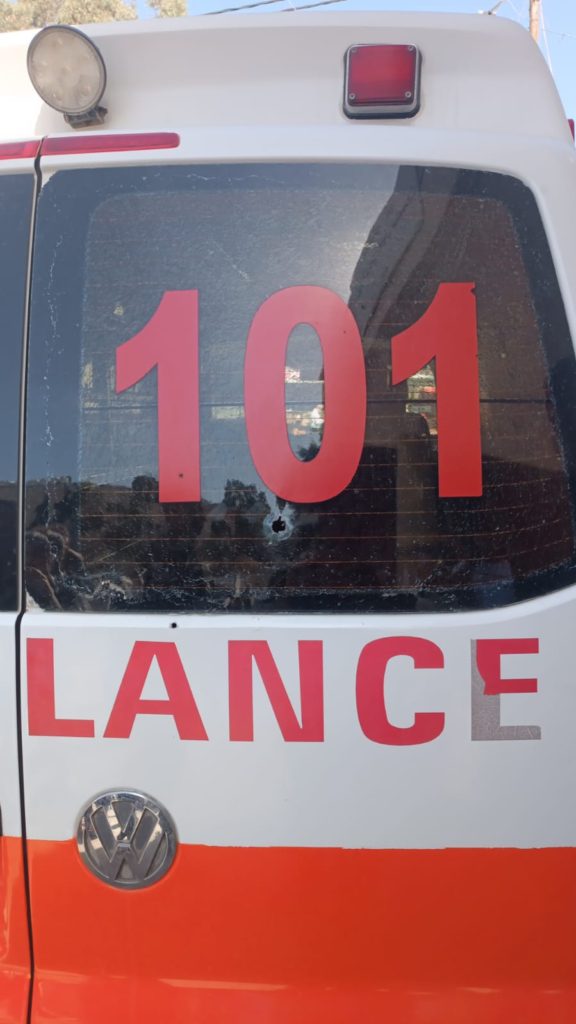
During the same raid on 9 November, the Israeli forces also shot at two other PRCS ambulances that entered Jenin refugee camp to collect injured persons. Video footage from a camera installed inside a PRCS ambulance shared with Amnesty International and verified by the organization’s Crisis Evidence Lab shows a round striking the road approximately two metres in front of the ambulance. The incident depicted in the video was also recounted to Amnesty International by a paramedic inside the ambulance who said that he also saw two other paramedics shot at by a sniper positioned in a building across the street.
International law requires that the sick and wounded and medical personnel be respected and protected. Obstructing access to medical treatment violates the right to health, the right to security of the person, to freedom from torture and cruel, inhuman, and degrading treatment and can lead to violations of the right to life.
“Amnesty International has long documented unlawful killings by Israeli forces and how they fit into the system of apartheid into which Palestinians are locked. It is time for the ICC Prosecutor to investigate these killings and the crime of apartheid in its investigation into the situation in Palestine,” said Erika Guevara-Rosas.
Background on international legal standards
In the occupied West Bank, including East Jerusalem, Israel is the occupying power and its actions are bound, in addition to the Fourth Geneva Convention and the law of occupation, by its obligations under international human rights law.
In policing demonstrations and carrying out other law enforcement functions in the West Bank, including so-called search and arrest operations, Israeli forces must respect human rights, including the rights to life and security of person and the rights to freedom of expression and to peaceful assembly, as well as international standards that elaborate how human rights must be upheld by law enforcement officials such as the UN Basic Principles on the Use of Force and Firearms by Law Enforcement Officials.
These standards prohibit the use of force by law enforcement officials unless strictly necessary and to the extent required for the performance of their duty and require that firearms may only be used as a last resort – when strictly necessary for military personnel or police to protect themselves or others against the imminent threat of death or serious injury. The intentional lethal use of firearms is only permissible if strictly unavoidable in order to protect life. Wilful killings of protected persons and wilfully causing great suffering or serious injury to protected persons are grave breaches of the Fourth Geneva Convention and war crimes.
